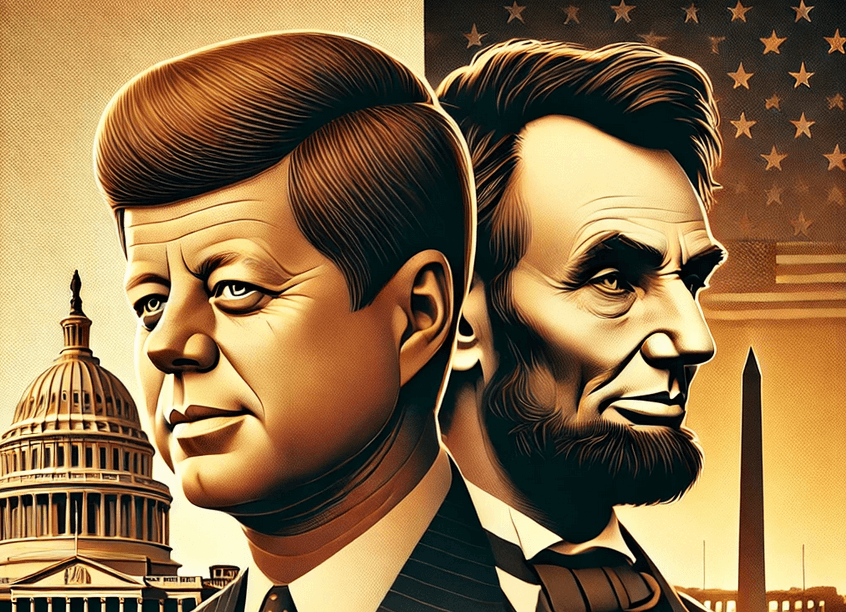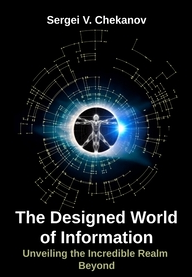JFK, Lincoln and the computer simulation theory
November 20, 2024 - Reading time: 9 minutes

The computer simulation theory (or "simulation hypothesis") is a concept that suggests the world we experience might be an artificial simulation. According to this hypothesis, everything we perceive - from the physical universe to our personal experiences - could be a simulation run by an advanced civilization, a post-human society, or post-human AI, among other possibilities.
If this theory is true, it could have some interesting consequences. For example, it might be possible to find a "backdoor" in our observations that could prove this concept. One potential option could be the effects of quantum mechanics, which might provide such evidence. But can we show this effect using historic events of our society?
One compelling evidence demonstrating that the simulation hypothesis is rooted in reality was demonstrated in recent studies [1][2] using surprisingly simple and convincing method which can be easily checked by everyone who knows about the USA history. This example uses a well-documented historical coincidence during the last days of the two former presidents, Abraham Lincoln (1809-1865) and John F. Kennedy (1917-1963), or "JFK." The numerous similarities surrounding the tragic events in their lives are widely known [3]. Both presidents lost children during their presidencies in the White House. Both were assassinated in the presence of their wives, by gunshots to the head, on a Friday. Their assassins were also killed before standing trial. Remarkably, both locations of the assassinations were associated with the name "Ford": Lincoln was killed in Ford's Theatre, while Kennedy met his death in a Lincoln convertible made by the Ford Motor Company. As you can see, there is a striking similarity in how both presidents were killed, where it happened, and what occurred afterward.
Although such similarities are interesting, what is missing are quantifiable measures. They can be some numeric patterns associated with the remarkable observations that initially draw your attention. And such patterns indeed exist, even after you ignore the above mentioned similarities, which are striking by themselves already.
The two men who succeeded Lincoln and Kennedy as presidents were both named "Johnson" and were both Democrats. Although this is quite remarkable, it might still be considered a coincidence given the popularity of the surname at the time. If one takes an extremely conservative approach to statistical inference and assumes only five surnames across the entire USA, and a 50% chance to be a Democrat, the probability of this occurrence would be (1/5)×(1/2)=0.1 or 10%.
Here is another intriguing pattern: Both Johnsons were born exactly 100 years apart (1808 and 1908) and completed their presidencies 100 years apart as well (1869 and 1969). Continuing this pattern, we observe another striking coincidence involving the number 100: Kennedy and Lincoln became presidents exactly 100 years apart (1861 and 1961). Prior to their presidencies, both were elected to the U.S. House of Representatives 100 years apart (1846 and 1946).
It is also worth noting that some sources suggest John Wilkes Booth, Lincoln's assassin, was born in 1839, while Lee Harvey Oswald, Kennedy's assassin, was born in 1939. More recently, however, most historians have agreed that Booth was actually born on May 10, 1838. Still, the approximate 100-year difference in their birth dates is striking. We might consider this as another coincidence involving the number "100" if we allow a tolerance range of about one year for the century mark.
Here we see five coincidences involving the number 100. Can this really happen by chance? Well, randomness does not favor round numbers like 100 ("a century") or 1000 ("a millennium") - these are just human preferences to mark milestones in our history. If you are programming a game where people are the players and you want to repeat the pattern of some event under different historical conditions, the first thing that comes to mind is "Let us try to use a century or a millennium to observe a new series of events and outcomes in the simulation". A human would rarely pick a time difference like 94 or 102.
If we only assume a time span of only 10 years, the probability of any five years matching is 0.01%.
Let us continue and notice that all six key figures in these historic events (Lincoln, Kennedy, their assassins and their successors) have the exact same number of characters (including letters, spaces and dots) in their names:
ABRAHAM LINCOLN and JOHN F. KENNEDY - exactly 15 characters
JOHN WILKES BOOTH and LEE HARVEY OSWALD - exactly 17 characters.
ANDREW JOHNSON and LYNDON JOHNSON - exactly 14 characters.
These numerical connections link the victims, their assassins, and the political figures who succeeded them after the assassinations. The probability of such triple coincidence occurring is estimated to be just 0.03% [1] for any 3 pairs of random strings representing names.
Moreover, one can estimate the probability that this "cascade" of tragic events surrounding Lincoln and Kennedy occurred purely by chance. The probability value is the product of all these small probabilities, since each of these numeric patterns is independent. This leads to a very small probability for a random chance to play any role: If one imagines creating many "simulated" worlds where figures like Kennedy and Lincoln are born and events unfold with similar patterns and random deviations, you would need approximately 3×10⁸ such worlds [2] to observe this pattern of multiple coincidences. This calculation assumes we ignore the initial coincidence - the similarity in the assassinations of Kennedy and Lincoln - which first led us to explore these numerical patterns.
One might initially think we're dealing with a single, "spiky" statistical outlier. While it's true that some coincidences must be evaluated against the total number of possible outcomes, the number of possibilities may not be as vast as it seems - especially if we strictly follow our main criteria outlined in the book [1]: These events must be significant and life-changing; quantifiable in numbers; they must involve people you already know (prior to the coincidence, which is key to creating a statistically unbiased sample); and the individuals involved must be connected by a logical link. In the case of the coincidences between JFK and Lincoln, both presidents were linked by meaning: Kennedy drew inspiration from Lincoln. This connection is the most important criterion when considering this unusual phenomenon.
Coincidences need to be weighed against the total number of possibilities. One could ask this question: "What is the total number of possibilities for such coincidences?" For example, here is a list of potential matches that could be considered: matching letters in the family names (not just full names), birth and assassination dates of Lincoln and Kennedy (which did not match), birthdays and birth years of the assassins (which did not match) or spouses (which did not match), and so on. However, it turns out there are not that many meaningful possibilities. You might count up to 20 significant possible situations before exhausting all reasonable ideas. To go beyond 20, you would have to start including completely insignificant details.
There are a few possible explanations, one of which is that our world could be a simulation. In such a scenario, the fates and lifelines of individuals might be predefined, though not strictly enforced. The numeric patterns we observe in coincidences could be "traces" of this grand design. Perhaps there are billions of simulations, each exploring different patterns of events to determine the optimal arrangement for advancing a civilization.
by R. Riviera
Some material in this article was reused with the permission of the author from the original article: "Unusual coincidences as design patterns pointing to an intelligent influence", Medium (Nov 2024) by S.V.Chekanov.
References
[1]The Designed World of Information: Unveiling the Incredible Realm Beyond, Book by Dr. Sergei V. Chekanov (2024) Paperback: 466 pages, IngramSpark, ISBN: 9798990642836, Webpage: https://jwork.org/designed-world/
[2] Sergei V. Chekanov, "Unusual coincidences, statistics and an intelligent influence", 2024, https://osf.io/preprints/psyarxiv/ybdvk, DOI:https://doi.org/10.31234/osf.io/ybdvk
[3] D. Link, Fact check: A 1964 conspiracy theory misrepresents Lincoln and Kennedy's similarities, USA Today (June 7, 2020)Accessed: 2024-11-01.URL https://www.usatoday.com/story/news/factcheck/2020/06/06/fact-check-1964-lincoln-kennedy-comparisons-only-partly-accurate/5311926002/
